What is the proportion of golden cup? the importance of the ratio of hand-brewed coffee powder to water, and how to calculate the ratio?
Brewing ratio refers to the ratio of the amount of coffee powder to the amount of water extracted, which will directly affect the extraction rate of coffee powder and the concentration of coffee liquor. The European and American "Golden Cup Criterion" takes the amount of powder and water as the regulation and control tool of the "bubble coffee tube table". Its complexity and importance are more important than freshness, fineness and water temperature, time, and water flow.

If you have mastered the first three items and still can't make delicious coffee, the problem should be the wrong proportion of brewing.
The more powder, the higher the ratio of powder to water, and the higher the concentration of coffee liquid, the easier it is to suppress the extraction rate of coffee powder, resulting in insufficient extraction rate, waste of coffee, and bear the reputation of raging nature. On the other hand, under the fixed amount of powder, the more water, that is, the lower the ratio of powder to water, the lower the concentration, the easier it is to increase the extraction rate, resulting in excessive extraction.
Only in accordance with the "Golden Cup criteria" bubble cooking ratio, Baiwei balance, can enjoy the perfect extraction of delicacy.
How is the proportion of tabletop brewing coffee in line with international standards?
In Taiwan, hand-brewed coffee or siphon pots are used to using the weight of coffee beans, but there is no increase in black coffee liquor. for example, when you like espresso, you often use 20 grams of coffee beans to brew 200 gallons of black coffee, with a powder-to-water ratio of 1:10, which is simple and clear. it is also in line with the convenience of practical operation. However, it is difficult for the desktop comparison method to be in line with the "Golden Cup criteria" in Europe and the United States.
The proportion of coffee brewed at 1:10 in Taiwan is a far cry from that of the Norwegian standard 1VR 18.51, which must surprise most people that tabletop coffee is so strong.
In fact, the taste of coffee in Taiwan is not strong. The problem lies in the different ways of comparison. The "Golden Cup Criterion" in Europe and the United States is not the milliliters of black coffee that has just been brewed in terms of grams of coffee, but the milliliters of raw cold water extracted by grams of coffee. After many trial calculations and ExtractMojo detection of the concentration, it is found that the ratio of table coffee powder to black coffee milliliters at 1:10 is about the same as the concentration and extraction rate of the "Golden Cup Criterion" for raw cold water. In fact, there is not much difference, so the taste of coffee in Taiwan is used to higher alcohol thickness.
The concentration of 1:12 in Taiwan is about 14.5 of that of the Golden Cup Criterion, that is, the ratio of coffee used by coffee fans in Taiwan is lowered by 2.5 parameters, which can meet the concentration of the ratio of coffee beans to raw cold water in the Golden Cup Criterion in Europe and the United States.
The ratio of grams of coffee beans to milliliters of black coffee is significantly higher than that of grams of coffee beans to milliliters of raw cold water. no wonder international friends who are used to the "Golden Cup Criterion" are frightened when they hear the ratio of the desktop. it was only after explanation that they realized that it was the difference in contrast, causing a big misunderstanding.
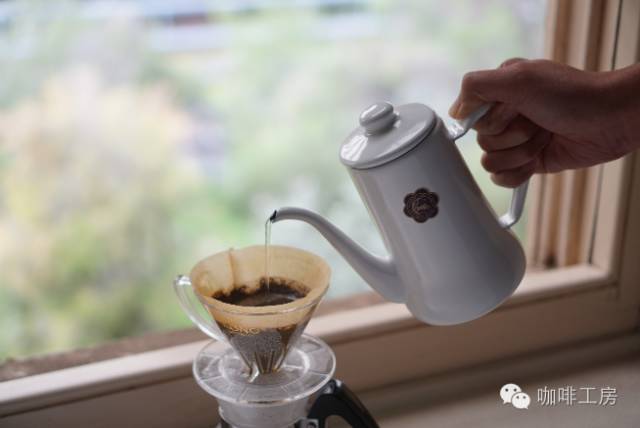
Why does the ratio of grams of table coffee to milliliters of black coffee have to be reduced by 2.5 parameters to be equal to the ratio of brewing in the Golden Cup Criterion?
Hot water is lighter than cold water, and coffee powder absorbs water.
There is a scientific basis for the ratio of coffee powder to unboiled water in the "Golden Cup Standard" in Europe and the United States. The weight of 1 milliliter of water is equal to 1 gram, which is built at a room temperature of about 20 ℃ Celsius. You should know that the density and weight of water will decrease as the temperature increases, and the volume of water will become "fat" as the temperature rises. When the water is heated to 90 ℃-93 ℃, it happens to be the temperature of brewing coffee, and the weight will be 4% less than the same milliliter of unboiled water of 15 ℃-20 ℃.
Taiwan is used to using hot black coffee as the comparison standard. although the milliliter scale of the coffee pot indicates 200 milliliters of black coffee, it is actually 4% more than 200 ml of raw water at room temperature, and its weight is reduced by 3%. This is due to the expansion caused by the heating of water.
More importantly, coffee powder absorbs water like a sponge. Studies have shown that every gram of coffee powder absorbs 2ml of water, and 20g of coffee powder absorbs at least 40ml of hot water. In other words, brewing 200ml black coffee with 20 grams of coffee beans requires at least 240ml of raw cold water, of which at least 40ml remains on the coffee grounds of filter paper or filter, because the desktop comparison method takes hot black coffee as the target. At least count the amount of water left in the coffee grounds. However, if the Golden Cup Criterion is based on raw cold water, there will be no such error.
Therefore, cold water will expand when heated, and coffee powder will be absorbed wildly when exposed to water. These two factors interact so that the proportion of brewed coffee is coffee powder (table), or coffee powder is in line with raw cold water (golden cup criterion). The desktop ratio only needs to be reduced by 2.5 parameters, which is equivalent to the "golden cup criterion". The concentration of both is the same by ExtractMojo detection.

Brewing ratio of hand-brewed coffee and siphon pot using "Golden Cup Criterion"
Based on the bubble cooking ratio of hand flushing and siphon pots in Taiwan, 2.5 parameters will be added to the "Golden Cup Criterion". With reference to the 8Mel 2 comparison table, the bubble cooking ratio of hand flushing and siphon pots in Taiwan can be in line with the "Golden Cup criteria". In the future, there will be no misunderstanding that the taste of Taiwan is stronger than that of Europe and the United States.
The comparison table is not complicated. The first column is the abbreviation of the four international gold cup systems, with subtle comments attached. The second column is the concentration range determined by the Golden Cup system.
The third column is the bubble boiling ratio of each gold cup system, that is, coffee coffee grams versus milliliters of raw water. Take SCAA as an example, to brew coffee with a concentration of 1.15% Mel 1.35%, the ratio of bean quantity to raw water must be between 1:21 of the lower limit and 1Ru 15.4 of the upper limit, and the amount of beans needed per 1000 ml of unboiled cold water is between 47.7MUR 65 grams.
If you look at the NCA system with a slightly stronger flavor, the concentration is between 1.3% and 1.55%. Per thousand milliliters of unboiled water requires 73.5 grams of beans per milliliter, that is, the soaking ratio needs to be between 1: 18.8 of the lower limit and 1: 13.6 of the upper limit in order to meet the requirements of the Golden Cup criteria.

Figure 8: Murray 2
The ratio of coffee powder to hot coffee in the rightmost column (desktop) is 2.5 parameters higher than that of the corresponding four gold cup systems, because the gold cup system is based on raw cold water, while the table is based on hot coffee.
The steaming ratio at 1:10 on the table is equivalent to the "Golden Cup Criterion" 1 12.5. This ratio is too strong, not even the thickest one in NCA (13.6). Although it is not an acceptable concentration, it is indeed a favorite of coffee lovers in Taiwan. The proportion of tabletop brewing coffee is mainly siphon pot and hand brewing, and this two extraction method uses high concentration to make up for the deficiency of extraction. If the electric trickling pot is brewed with a bubble ratio of 1buzz 12.5ml (beans weigh more than hot coffee milliliters), it will be too thick to enter, which is due to the fact that the extraction efficiency of the American trickling pot is higher than that of the hand-brewed and siphon pot. The Golden Cup Code is customized with an American coffee machine.
The fourth column is the ratio of the amount of coffee beans commonly used in the siphon pot to the milliliter of hot coffee. This comparison method increases 2.5 parameters compared with the gold cup system, so the ratio of each gold cup system only needs to be increased by 2.5 parameters, which is equal to the ratio of the table, or the ratio of the table is reduced by 2.5 parameters, which is equal to the ratio of the gold cup. Therefore, the bubble cooking ratio of SCAA is in a range of 15.4, which is equivalent to that of the desktop, which is 18.5 and 12.9.
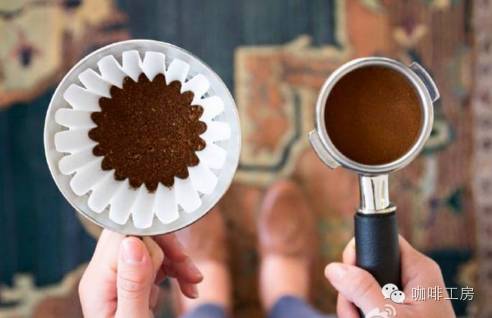
The proportion of Chinese and western cooking
If you think the 8mur2 chart is a little complicated, don't worry, please refer to the 8mur3 summary of the ratio of hand flushing to siphon pot, which is summed up as the practical ratio of heavy taste, moderate taste and light taste in Taiwan, and corresponds to the proportion of "Golden Cup Criterion".
The boiling ratio of the Golden Cup Criterion is based on the milliliters of raw cold water, which is troublesome to implement. Dare to ask if the water is full and measure the required milliliters of raw water or hot water before hand flushing?
However, with this comparison table, coffee fans in Taiwan need not regard trouble as interesting, nor do they need to change the original comparison method. As long as they remember the amount of coffee beans and milliliters of black coffee liquid, they can also get the table-top brewing ratio, and then reduce another 2.5 parameters, which can correspond to the proportion of the "Golden Cup Criterion." as shown in figures 8 and 3, it is easy and happy to be in line with the international golden cup ratio. You will be surprised that it was too wasteful to use powder in the past. If we can improve the extraction efficiency in accordance with the brewing ratio of "Golden Cup criteria", we can also make mellow coffee.
In fact, the bubble cooking ratio of "moderate taste" in Chart 8, from 1:12 to 1:13, that is, the golden cup standard of 114. 5 to 1-15. 5, can already make a full-bodied coffee. There is no need to make coffee with a ratio of 1: 10. The concentration is too high, although it is conducive to the performance of the sticky taste, but the taste spectrum is easily entangled and the sour taste is too high. On the contrary, it is not easy to drink the delicate level of fine coffee.
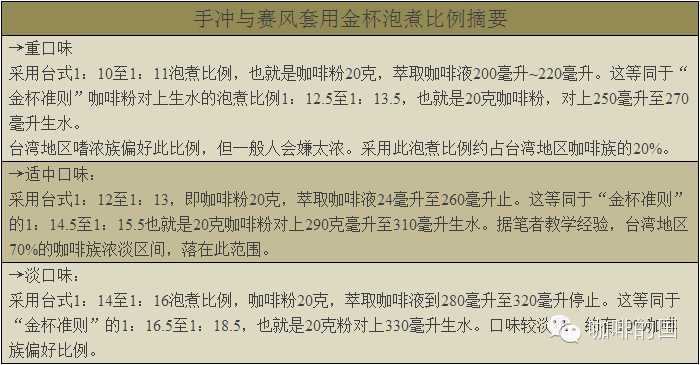
Figure 8: Murray 3
The 1:10 ratio is very abnormal.
Basically, as long as the water temperature, fineness and extraction time are normal, and the soaking ratio is within the range of figure 8Mu2, it is easy to brew delicious coffee that meets the "golden cup criteria" with an extraction rate of 18%, and a concentration of 1.15%-1.55%. There will be no problems of excessive extraction, insufficient extraction or waste of coffee.
The proportion of 1:10 on the table is equivalent to the 1RV of the Golden Cup criterion. Has exceeded the boiling ratio of the thickest Norwegian gold cup 1RV 13.6 among the four gold cup systems. If the brewing ratio is not in the 8mur2 icon, it is an abnormal ratio. Due to too much powder and too high concentration, the extraction rate is often lower than the lower limit of 18% in the Gold Cup Criterion, which is a waste of coffee powder and should not be encouraged. In fact, as long as the water temperature is raised, the amount of water is replenished or the extraction time is prolonged, the extraction rate is increased from less than 18% to within the range of 18% Murray 22%, and the extraction efficiency is improved, so that the normal brewing ratio, that is, the more economical coffee powder, can be enjoyed, and the delicious coffee which is mellow and more layered can also be brewed. Only when the proportion of brewing is correct, can you enjoy the delicious coffee.
Mainstream coffee brewing concentration and non-mainstream coffee brewing concentration
The concentration and brewing ratio of these four gold cup systems can be called the global mainstream range. If your coffee concentration preference or brewing ratio is not included, it may be that your taste is too light or too strong to become a non-mainstream. It is believed that more than 90% of coffee lovers in Taiwan have a strong preference for hand-brewed coffee and siphon pot brewing. The ratio of brewing coffee to siphon pot is all in the chart of 8mur3. Check it before you want to brew a cup of your favorite coffee, whether it is mainstream or non-mainstream.

Does the coffee liquid need to be weighed?
This year, some picky coffee fans follow the example of the "third wave" industry in Europe and the United States, putting the coffee cup on the scale and extracting the coffee liquid to the set weight. Is it necessary?.
No need! Unless it is espresso, because of the dense foam Crema, it is not easy to read the correct milliliters of coffee liquid, so it is necessary to weigh it, but it is troublesome to implement. But if you just want to know the brewing ratio of follicular coffee, you don't need to weigh black coffee. Milliliters are enough. Because after the hot coffee is brewed, it will evaporate and lose dozens of grams in a minute, which adds a lot of variables and doubts to weighing.
In addition, if you weigh black coffee, you will find that the coffee brewed is obviously thinner than the list in milliliters, that is, the same gram of coffee liquid will have more water flavor than milliliters.
For example, if you brew a cup of coffee by hand, although the coffee liquid has reached 220 milliliters, the weighed weight is only about 220 Mel 210 grams (depending on the water quality). It is necessary to increase the amount of extraction by about 10ml / 20ml, that is, 230ml / 240ml of black coffee, to reach 220g. In other words, making a cup of 220 grams of black coffee will be thinner than 220 milliliters of black coffee because the hot water is lighter, and pay attention to whether your electronic scale will lose its accuracy due to the high temperature of the hot coffee. Therefore, coffee fans with milliliters as the benchmark is enough, there is no need to bother to weigh black coffee, so as not to be self-defeating.

Important Notice :
前街咖啡 FrontStreet Coffee has moved to new addredd:
FrontStreet Coffee Address: 315,Donghua East Road,GuangZhou
Tel:020 38364473
- Prev
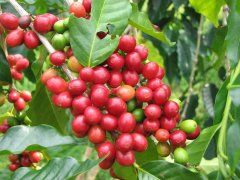
Starbucks' most classic single coffee-the story of Kenya coffee beans, why Kenya is an elephant
Professional baristas Please follow the Coffee Workshop (Wechat official account cafe_style) Starbucks has been supplying coffee in Kenya for more than 40 years, and the quality and flavor of coffee from this region has always been amazing to us. The fruit is large and juicy, with sour flavors of blackcurrant, fresh BlackBerry and grapefruit. It is a unique, fresh and delicious coffee. When summer comes
- Next
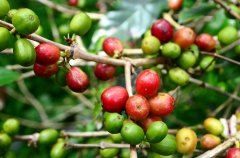
Do you have to understand the chemical reaction in coffee roasting? the change of coffee beans in the boiler
Communication among professional baristas follow the coffee workshop (official Wechat account cafe_style) aside, the physical changes of coffee beans during heating are already quite complex: the same bean is fried in the same way (that is, the same roasting curve), but the taste is not necessarily the same. Some enthusiasts like to stick graphs on their bags when communicating, although this is helpful to test beans.
Related
- Beginners will see the "Coffee pull flower" guide!
- What is the difference between ice blog purified milk and ordinary milk coffee?
- Why is the Philippines the largest producer of crops in Liberia?
- For coffee extraction, should the fine powder be retained?
- How does extracted espresso fill pressed powder? How much strength does it take to press the powder?
- How to make jasmine cold extract coffee? Is the jasmine + latte good?
- Will this little toy really make the coffee taste better? How does Lily Drip affect coffee extraction?
- Will the action of slapping the filter cup also affect coffee extraction?
- What's the difference between powder-to-water ratio and powder-to-liquid ratio?
- What is the Ethiopian local species? What does it have to do with Heirloom native species?

